In the last piece I explained the advantages and disadvantages of fixed path infrastructure, but I feel the need to briefly expand upon one point I made. Let’s say that you have a 20 km commute, that normally takes you 20 minutes by car. Now, let’s pretend that we have public transportation that is so good, it’s literally teleportation.
These teleportation portals draw a lot of power, so we can’t place them anywhere, but they get you to a fellow portal safely, and within one second. In that case, how close does the source portal need to be to your house, and the destination portal to your work, in order for this to be useful?

Assuming a walking speed of 6kmph, which is about average, it takes you 10 minutes to walk 1 kilometer. Therefore, you will break even on time if you have to walk a cumulative two kilometers. There are advantages to not having to drive, and even if this was slower than driving, there would be some upside, even after the novelty of teleportation wore off.
But what if you had to walk a total of 4 kilometers? Now you’re spending 40 minutes walking, even though the teleportation got you 80% of the way there. What about 9 kilometers, where you’re spending an hour and a half walking? Would it be worth it then? Because even in that case, the teleportation portals still got you 55% of the way there, or “most of the way.”
NOTE: Occasionally, even if the teleportation got you within 1km, you might want to take your car due to the weather, or needing to make a stop at the grocery store on the way home, etcetera. But that’s a different issue.
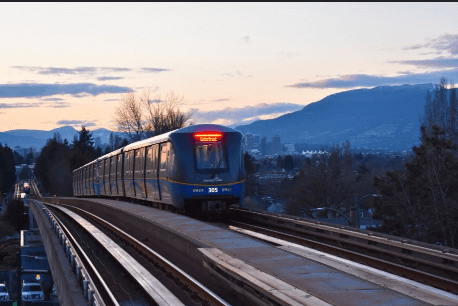
This is the Partial Trip Problem with fixed path infrastructure. On paper it might sound like it’s doing its job if it gets you 85% of the way there, but that may well be totally useless. It’s also why comparing a small section of congested highway to a small section of the subway and measuring throughput is complete nonsense. If the subway could only get you through 9% of your journey it’s totally useless, even if you are following it for its entirety above ground.
For pedestrian’s fixed point infrastructure it’s a little different, since you still have your legs after taking the escalator. That’s why almost every mall or other major area has escalators right next to the stairs. There is little benefit to giving people extra freedom of movement on the stairs, since we can usually presume they want to get from the top to the bottom.

Some places have steps that are far too wide to practically put in escalators. They may also be a reasonable expectation of people moving horizontally on them. Perhaps the escalator would ruin the aesthetic of the place. A good example of this would be the US Capitol building.
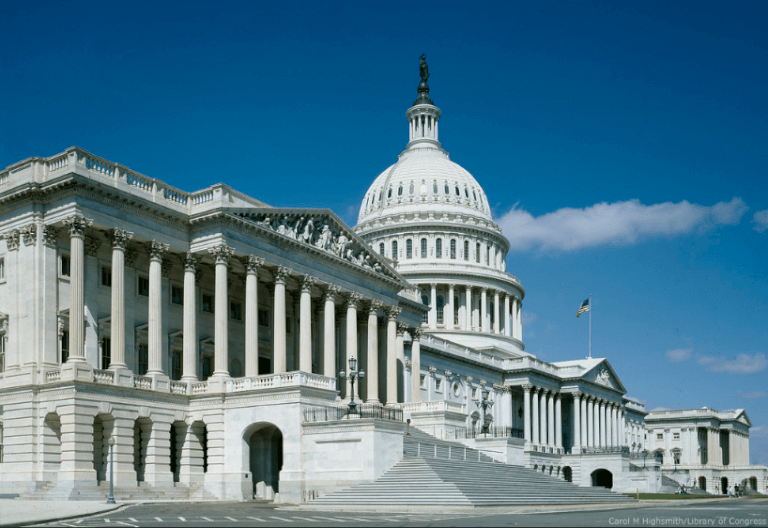
Or even better, Helsinki’s Senate Square. It would be absurd if someone said that these wide steps are “inefficient,” so you should rip them out and replace them with an escalator. Then people wouldn’t be able to sit down, or walk from one side to the other side.
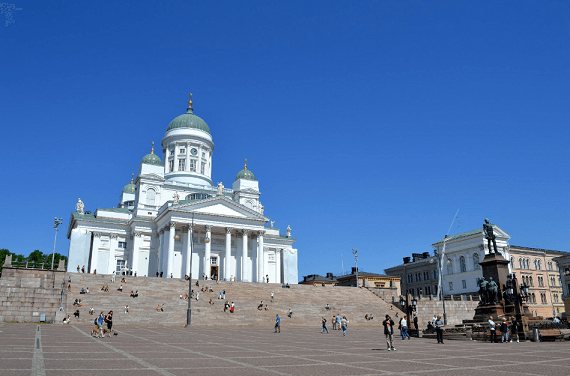
As mentioned before, escalators have a benefit that trains and buses don’t, which is that you still have your legs when you get to the bottom or top of them. There is no Partial Trip Problem, since you’re not crippling your ability to move after using them by leaving your legs behind.
But imagine you did need to leave your legs at home if you wanted to ride the escalator or pedestrian conveyor belt at any point during your trip. And no, you don’t get to use a wheelchair. It’s difficult for most of us to leave our legs at home, but let’s pretend.

Above is you for your entire trip when you don’t get to ride the escalators and conveyor belts. Below is you for your entire trip when you do. Instead of walking, you tediously crawl. However, you are now allowed to use the escalators and conveyor belts.

If this were the case, a whole lot fewer escalators would be in existence, and probably single digit pedestrian conveyor belts. It would be true that, for the brief moments of your journey that you were on the escalator/conveyor belt, you would potentially be moving faster than people walking on stairs or the general ground. But you would then have to crawl from your house to the conveyor belt system, and after getting off your stop, crawl to your final destination.
Occasionally this might be worth it, but for the most part your average trip would be terrible. But now imagine some snarky fag saying something like “conveyor belts are better than floors because they have higher throughput, use less space, and require less caloric output.” Or snarking about “feet infrastructure isn’t space efficient and is subsidized,” or some other retarded non-sequitur. It might not sound believable that there could be people who miss the point this badly, but this is exactly the “efficiency,” argument that they use for buses and especially subway systems.
“Rail will always be more efficient than trucks, not just in fuel efficiency, but also in land use.” – Alan Fisher, Urbanist Midwit

Alan Fisher
But let’s pretend this was a thing that people did, leave their legs at home so they could use conveyor belts and escalators, while crawling everywhere else. In that case, there would be an incentive to make the escalators and conveyors as long as possible in between gaps, so as to maximize our speed.
We need to make stops for people to get on and off the escalator or conveyor belt. The more we have the slower our trip, due to the constant stops. The fewer we have the more we over or undershoot our destination, even assuming it’s somewhere on the line to begin with. This is The Spacing Problem inherent to mass transit. You can’t stop every two meters or you ruin the speed of the trip for everyone.
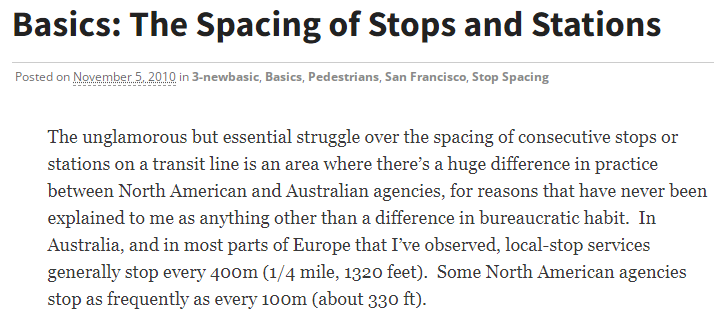
But the other problem that mass transit faces is something that pedestrian conveyor belts and escalators don’t face, the aforementioned Partial Trip Problem. Remember, you still have your legs at the top of the escalator unless something has gone terribly wrong. This is one of the reasons why the Traffic Troons love their oversimplified models of transportation, like this one that Adam Something created where people live in SUBURB and want to go down tubes to CITY.
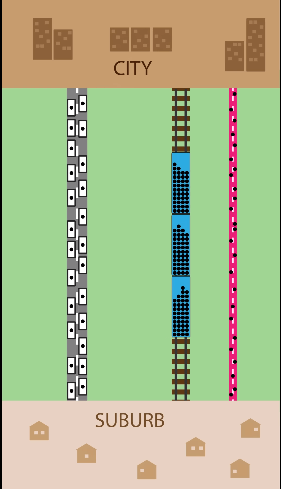
In this scenario there is no Spacing Problem slowing everyone’s trip down on the train, since there is one start and one stop destination. There is also no Partial Trip Problem, since everyone goes from SUBURB, where they currently are, to CITY, where they need to be. In the real world, driving your car from your specific home address to your specific destination address does not suffer from either of these problems.
A bus line, and especially a subway line, forces a hard commitment from the user, unless they can afford a taxi or are getting a ride. In the real world, cities are big places, and getting from one side to the other, or even just to your particular destination, is probably going to require a wheeled vehicle of some sort. That’s why horses existed and were used in all the same places that cars are used today for thousands of years. Something the Urbanites never talk about.

It’s also why the hyper-focus on throughput advantages of fixed path infrastructure, usually passenger rail, is so fundamentally dishonest. Sure, a freeway might take up more space with less throughput at peak hours. But if people suffer through some congestion at the end they have their car. Ride the subway until your stop and you’re stuck with your legs pushing you around at 6 kmph. Slower in some areas, since you still need to wait at intersections. You might not have to if they build you a pedestrian over or underpass. But that’s just CaR InFRaStrUcTUre so the traffic antifas hate it.
The denser the area, the more fixed-path infrastructure makes sense, since the general purpose road system will become clogged and overworked. And again, this was true long before the invention of the automobile. All of which leads some of these annoying cunts to bloviate about how we need to shove everyone into 1,000 foot skyscrapers because “muh planet.” Well I can’t cover everything in one piece, but we’ll address that in another.
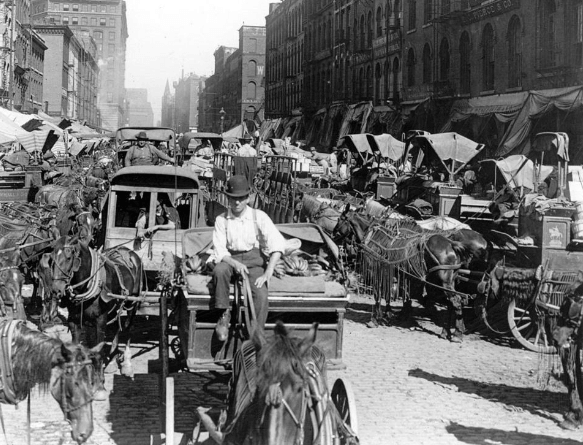
The simple fact is that some areas simply cannot make use of mass transit. If you have a ranch, sending regular bus trips down there makes no sense at all. Wanting to build a rail line would be the height of idiocy. Even these guys absurd “muh induced demand,” nonsense isn’t enough for them to deny the obvious here.
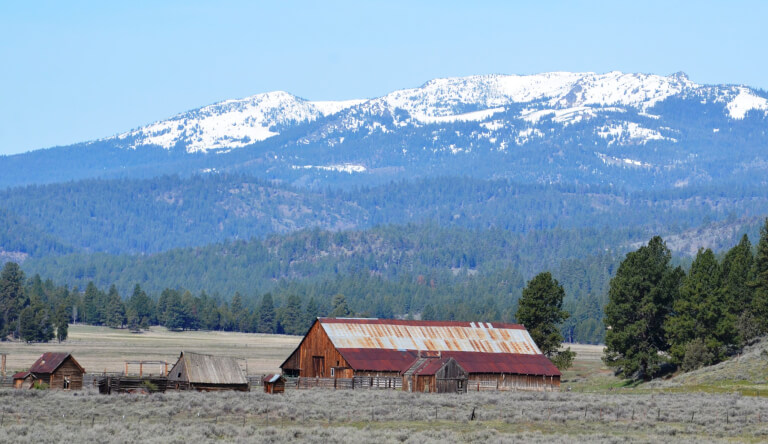
Due to the Partial Trip Problem and the Spacing Problem inherent to mass transit, you don’t just need a certain minimum level of traffic down a consistent route, but to have that traffic also starting and ending near the beginning and ending of the line, or at one of the stops. This becomes more and more likely the higher the density of a certain area, as well as the higher the total population.
A charming rural town might be able to make use of a single small bus line, but perhaps not even then. The Urbanite Bugcreatures would then say that everyone should just live in the box so we can do mass transit anyway, but fuck them, and that’s for another piece. For now I’ll assume that we’re letting people live the way they want to live, which is not packed together like sardines in a can.

Even medium sized cities with lower density can’t regularly make use of mass transit, something that is accidentally shown to perfection by one Urbanist that we have yet to see, “ERYNGO URBANISM”. He tried taking the bus in Tulsa, Oklahoma, and by his own admission, it went poorly.
(0:35) In Tulsa this bus trip is supposed to take about an hour and a half. But by car, 16 minutes.

You would think that he’d call it off there, but he doubles down on the dream of shoving the Goyim into the moving box despite the trip officially taking almost six times longer. His argument boils down to “muh induced demand“, this time for buses. You see, create bus lines that no one rides, and you’ll see the property values in an area skyrocket and get the density later.
We also don’t have the transit systems to support those medium to high densities. It’s essentially a paradox, you can’t have one without the other. My suggestion is this:
Instead of building up density first to create congestion, and then later alleviate that congestion with public transit. We could, and should, improve the public transit system right now, which would increase land values around those transit lines, and in turn create an overwhelming demand for that higher density without creating that congestion problem in the first place.
I wasn’t exaggerating. Literally just build buses that no one will ride.

Anyway, the bus missed him at the train stop. That’s not a metaphor, it really happened. So he walked 2.5 miles to another stop because it was faster than waiting another hour between buses. And you’ll see why they’re already running them too often at a rate of one per hour when he finally gets on.
I’m not going to transcribe the entirety of the video. But at one point he has the “genius” solution of shoving buses down every single street, North-South and East-West, in 15 minute intervals. That way you can easily get anywhere, assuming a perfect grid, by just getting on two buses. One that takes you North-South, and one that takes you East-West. I’m sure there are lots of little implementation detail issues with this, but more relevant is the astronomical cost, something he is at least honest with.

Tulsa city official.
At least he interviewed a Tulsa city official who politely informed him that the money for that doesn’t exist. Although the guy did say that you could build a very nice bus system for a fraction of the cost of one mile of rail, so there’s that.
After the interview, ERYNGO URBANISM calculates the total number of buses required to serve the downtown portion of Tulsa, Oklahoma, a city with a population of 400,000 people.
If you give every route a ten to thirty minute frequency depending on the number of destinations along a route, you’d need around 361 buses to pull off this system.
Now at first I thought that was way too many. But the more I started to look into it, a 400 bus fleet is actually not that crazy for a city with Tulsa’s population. Looking back at Italy, the city of Florence actually has a slightly smaller population than Tulsa. And Florence has nearly 500 buses in total.
And that’s not to mention that Tulsa has about five times the land area to cover. So by comparison that 360 bus number actually sounds pretty reasonable.

Why would Tulsa having one fifth the population density mean it should have more buses? The opposite is obviously true. That’s like saying that the entire population of rural New York is equal to the population of Manhattan, but spread out over 1,000 times the area. Therefore, they should have 1,000 times more subway lines and 1,000 times more skyscrapers.

He even includes this scaled version of Tulsa so you can see how much less dense it is than Florence. I’m trying not to be hard on the guy, because he seems like less of a cunt than the others, but there is a certain point where your analysis misses the point so hard that it becomes incoherent.
Now I’m not going to get too deep into how much this system would actually cost, partially because I’m not an expert. By my best guess it could be about two hundred and sixty nine million dollars per year.
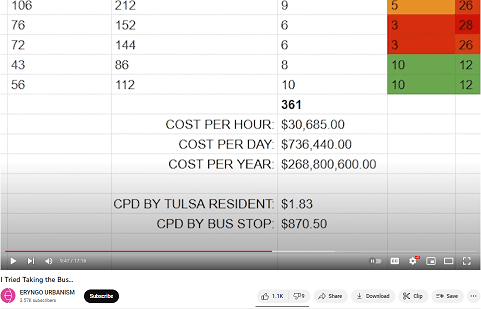
BTW, he wants to run the buses nonstop, even during nighttime.
Okay, I see. He’s done the math and realized how insane his proposal is. I understand. After all, no one could seriously propose running buses nonstop even during night, but especially not after you’ve realized it’ll cost the city over a quarter of a billion. This is the part of the video where he explains how you can’t just expand the bus system willy nilly, since the costs become prohibitive, and he scales back his proposal.
Which sounds like a lot, but in reality we could come up with that if each city of Tulsa resident contributed a dollar and eighty three cents per day.

Uh, I mean okay. A quarter billion still sounds like a lot to me, but I’m sure that he’s right about to dial it back a notch or ten.
And when you take into consideration that some of that money can be made back through fares and by renting out advertising space on buses and at stations, the system could potentially almost pay for itself.

Tulsa has a population of 400,000. So of course it makes sense that we can charge $268 million for bus advertisements. Not even that, because “some” of this can be covered with fares. I think these are important arguments to quantify, and I eagerly await his explanation for how he’s going to make all this work for the taxpayer.
But no matter how much it ends up costing, a great public transit system is a great way to boost a local economy. According to The American Public Transit Association, every dollar invested in public transportation projects generates from four to nine dollars in local economic activity. A good public transit system is sometimes referred to as a “wealth multiplier.” So committing to build a system like this would absolutely be worth any price tag.
Nevermind. You see it doesn’t matter the cost since it’s a “wealth multiplier”? Cool, let’s spend a trillion dollars on public transit in Tulsa then. That way we’ll get nine trillion back, and if we re-invest this by shoving more buses onto the road we’ll have 81 trillion. And if we re-invest this again we’ll have $729 trillion. Then we can spread out the profits amongst the 400,000 Tulsa residents, for roughly 1.8 billion in profits per Tulsa resident. Who wants to be a billionaire? I certainly do.
CBC:
Last week, the Toronto Transit Commission announced a 10 cent fare hike — raising single cash fares to $3.35 — while also reducing services to address a $366 million budget shortfall. It’s another hit to consumers like Fairchild, who are already paying higher cost-of-living expenses due to inflation.
For some stupid reason, real cities are cutting back their transit expenses due to declining ridership, and not understanding that you can just spend money and get more money back because reasons. But that’s just Toronto. I’m sure that Montreal is doing much better.
In November, the Montreal Transit Corp. estimated $77.7 million in losses in 2023 and warned they could lead to service cuts. As a result, the agency announced earlier this month it was scrapping a 10-minute maximum wait program for its busiest bus lines.
I covered this in a piece on public transit ridership being down throughout North America. No, you can’t just spend arbitrary amounts of money on public transit, that’s fucking stupid. Pulling a Malcolm Gladwell and going StUDy SaYS does not change this obvious reality in the slightest.
Anyway the Tulsa official brings him back to reality somewhat by pointing out another weakness of public transit that personal transit does not suffer from.
[Money and bus capacity] is a very finite resource. You can spread it out by time. You can run a service 24 hours a day. You can spread it out by coverage, you can cover the entire city or more. Or you can look at frequencies, how often your buses come.
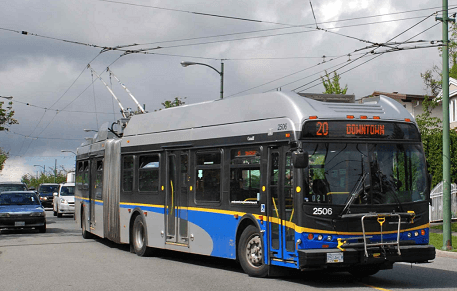
Look at this chonker.
Once again, personal transit does not have this problem. You don’t need to worry about covering every last area, since the people there already have cars. You don’t need to worry about running them at night with extremely low capacity, because the people who need to drive at night just use their cars. You don’t need to worry about coming frequently, since the car leaves exactly when the driver wants it to leave.
Maybe there are areas that have low ridership. They’re hard to serve with the big bus, but, because of it’s low ridership maybe it makes more sense to have a newer type vehicle that’s on demand, that can serve the people in those areas and connect them with other places.
A vehicle that’s on demand, eh? One that just sits there doing nothing until you need it to do your specific task? This sounds familiar for some reason.
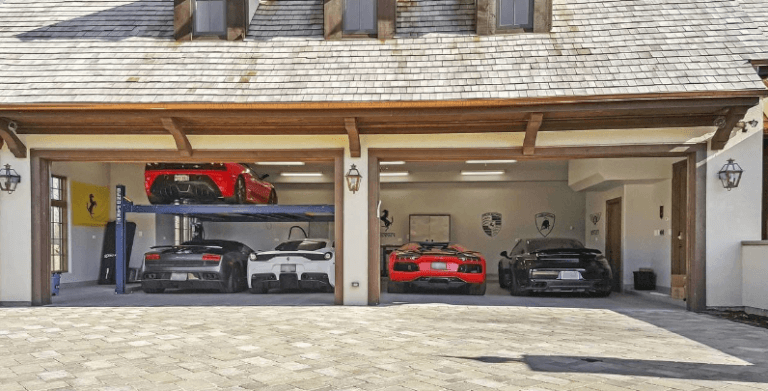
In other words the Tulsa city official is suggesting that we have our own personal car and not use the bus. Or at least that we have taxi-like service provided by the city, because it’s not feasible to do something else for many areas where the population density is too low, and they’re all making random trips to random areas of the city.

That city planner guy, Chase, seems pretty reasonable. That makes it all the more annoying when ERYNGO URBANISM just blithely cuts away to his “superior” proposed bus route.

This is incredibly obnoxious, especially since he isn’t using any more buses. He just assumes that he can do better than the people whose jobs are planning the bus routes. But all that needs to be put on hold, because he finally gets on the bus, and it’s amazing how revealing it is.
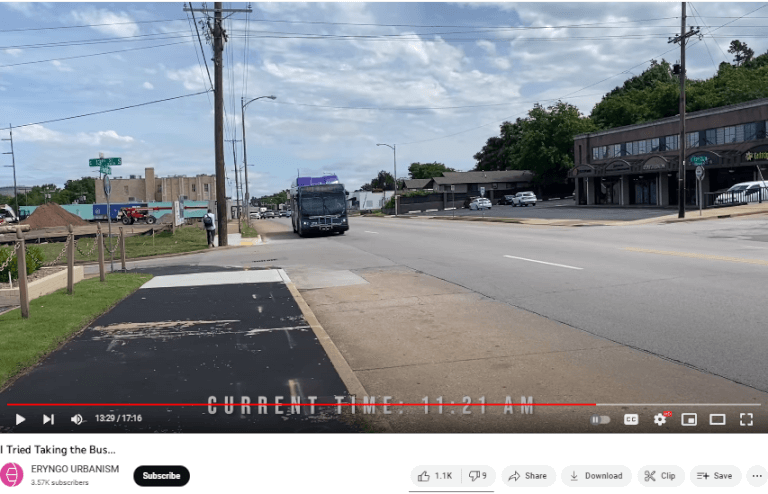
First of all, that’s a pretty big bus that pull up. It’s a standard, full sized bus, that probably has capacity for something like 80 passengers. Boy, do they ever need that space.
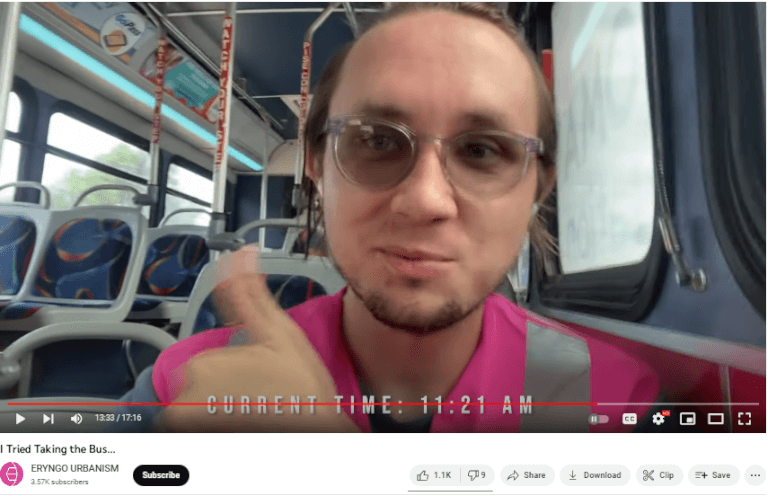
I had to make sure that I included the YouTube meta info so you understand that I’m not making it up when I say that he’s the only person on this bus. There’s no one else there, and even he comments on this.
From the moment I got on the bus, to the moment I got off, honestly everything was fantastic. As it turns out they’ve waived fares through the end of the month, so my ride was free.
The bus was air conditioned, which was a nice change from [insert sun shot]. It was also roomy and clean, partially because I was the only person on the bus for most of the trip. There were two other people who were hopped on and off for about a mile.
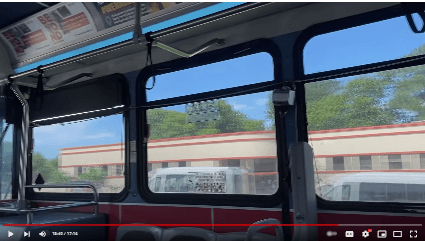
Stills can’t quite capture it. There’s no one else on the bus, and it’s the middle of the day, and this is despite them waiving the fares. This isn’t a night bus that’s running at 4 AM on Tuesday. He even showed an outside clock that said “11:09.” If the bus is this empty there has been a catastrophic misallocation of resources. There. Are. Too. Many. Buses.
But I also want to stress that a good bus system is more than just charity. It could, and should, be a decent option for people like me who are just trying to get around, and don’t really care for driving.
This trip took me nearly three hours to get across the city by bus. In this time I could have driven the same route 11 times, or just straight up walked the whole way.
Why do you even have a bus system then?

There is a way that you could actually service the transit demands of Tulsa, provide charity to those less fortunate, all while spending an order of magnitude less money.
If this trip had taken just twice as long as a car ride had taken, I could see myself doing that on a regular basis. If it was faster than taking the car, I could see most people doing it on a regular basis.
Faster than a car?
 This might seem nonsensical to you at first glance. But what he’s pushing for is “Bus Rapid Transit,” an often obnoxious system where buses get clear right of way over other traffic constantly. Every now and then it might make sense, but in this case the buses are already empty as it.
This might seem nonsensical to you at first glance. But what he’s pushing for is “Bus Rapid Transit,” an often obnoxious system where buses get clear right of way over other traffic constantly. Every now and then it might make sense, but in this case the buses are already empty as it.
Now, if you want to see changes like this in your city, you’re going to have to make your voice heard. Contact your city Councillor in your district. Start a YouTube channel about it. And when it happens I will be back to take this trip again and show you just how much it’s improved.

One of the most obnoxious things that the Traffic Troons do is try to force big city and big density solutions on everyone. Sometimes they make appeals to “induced demand,” to just say that it doesn’t matter how mismatched the supply and demand is, the demand will catch up. Sometimes they say what this guy said here, and just invent economic benefits to justify losing massive amounts of money. Some of them are more honest, and admit that mass transit doesn’t work without a minimum density and population, and then say that the planet is going to explode if you don’t get into the cuckbox.
I was surprised to see a bus empty in the middle of the day, but I’m not surprised to see an empty bus in general. Anyone who has ridden public transit for any length of time has had the experience of being the only person on the bus. It’s difficult to get the numbers, but this study tries to do just that, and needless to say, they’re not very full. For reference, the average capacity of Vancouver buses is 77 people, and these are standard sized buses.
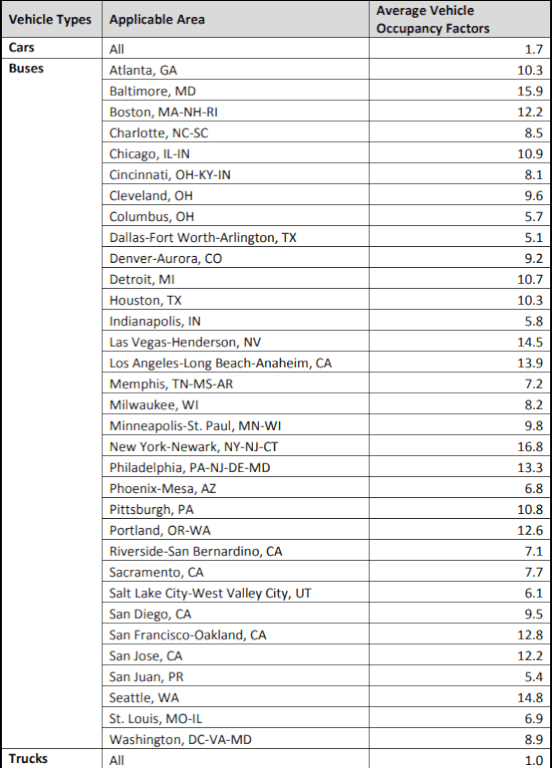 But there is good news. If you have huge buses with no one in them you can use something else instead. Something called: a taxi.
But there is good news. If you have huge buses with no one in them you can use something else instead. Something called: a taxi.

You might be thinking that poor people can’t afford these to go to their minimum wage jobs. You’d be right. However, you can have a subsidized taxi service that does nothing but pick people up directly at their homes, and drop them off directly at their work, completely free of charge. They would need to show proof of employment, but once they did that, we could give them totally or partially subsidized rides. After all, there aren’t that many of these people to begin with.
US Bureau of Labour Statistics:
In 2020, 73.3 million workers age 16 and older in the United States were paid at hourly rates, representing 55.5 percent of all wage and salary workers. Among those paid by the hour, 247,000 workers earned exactly the prevailing federal minimum wage of $7.25 per hour. About 865,000 workers had wages below the federal minimum. Together, these 1.1 million workers with wages at or below the federal minimum made up 1.5 percent of all hourly paid workers.
There are roughly 330 million Americans. 73 million of them are paid hourly wages, and 1.5% of those are paid minimum or below minimum wage rates. That works out to about 1.1 million Americans out of 330 million, or about 0.33%. Let’s even round up all the way to 0.5% to steelman our case, and assume that none of them have access to cars.
Out of a Tulsa population of 400,000, that means that we need to provide rides for 2,000 people, potentially twice each day, for 4,000 rides total. With an average cost of $20, that works out to $80,000 per day, $28.5 million per year, and just one tenth of Xir Urbanites proposed empty buses to nowhere service.
And our numbers are still too high, since we overestimated the number of people we need to offer rides to, and we only need to service these people for five days a week at most. The real number is $12.2 million for a personalized and totally free taxi service for low-income people over the course of an entire year, that takes them from their homes to their work, and back again. That’s $30 bucks from every Tulsa resident per year, or less than 10 cents per day.

The state of New York spends $15 billion annually on all transportation, or about $750 per person. It is not unreasonable to spend $30 per person, or about 5% of that, subsidizing poor people who are actually working by giving them rides to and fro their destinations. It is unreasonable to spend that entire budget running buses up and down the streets with no one in them all 24 hours of the day and then say that this is an “investment.”
Since this is a subsidized service, costs can be cut in a number of different ways as compared to a traditional taxi service. To get around rush hour peaks, we can be more flexible with pick up and drop off times, at the expense of them potentially waiting longer. We’re not forcing them to wait at a bus stop, but presumably at a place where they can do something instead, their workplace, so it’s still much nicer service for them. This will lower the total number of drivers and vehicles.

We get them to coordinate with us ahead of time so we can carpool any people who are living in close proximity to each other, and heading to destinations in close proximity to each other. In many cases the trips are too spread out, but in some cases, we can pick up multiple people, drastically reducing our miles driven and total costs, albeit at the expense of making any one trip more unwieldy. However, we won’t be forcing anyone to share space with wildlife like this.

The fewer people we have, and the lower the population density, the more we’re going to need point to point service. The more that’s reversed, the more we’re going to be able to make use of carpooling. In some cases we might find that we can pick up a lot of people and deposit them in one relatively compact place and that services their transport demands. Can’t think of any real world examples of that though…

The school bus is a good example of a bus system that grows organically in response to real demand. In many areas, even in a place like Tulsa, we would find other reasons to employ small buses wherever appropriate. Any city will have pickup and destination hotspots, where lots of people are moving from a relatively dense area to another relatively dense area in similar timeframes.
We can’t just pretend that we have demand when we don’t. However, in some cases there will be a regular, constant demand. In that case we have a few very small buses that make regular trips up and down that trip. Here is an example of one of those.
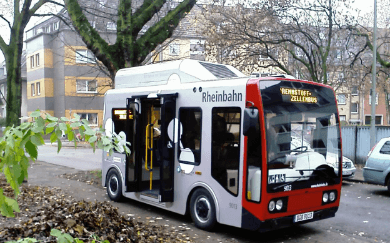
Guess which city this bus is from?
A subsidized bus system does not need to be forced on an area top down. It can naturally arise out of a system of subsidized taxiing of people for non-bullshit reasons. Only in the areas where it actually makes sense to put buses in should buses be put in.
There is a very strong moral argument to be made for subsidizing people’s ability to get to work. There is very little argument to be made for subsidizing buses generally. And there is definitely no argument for having gigantic buses when you have no people riding on them.
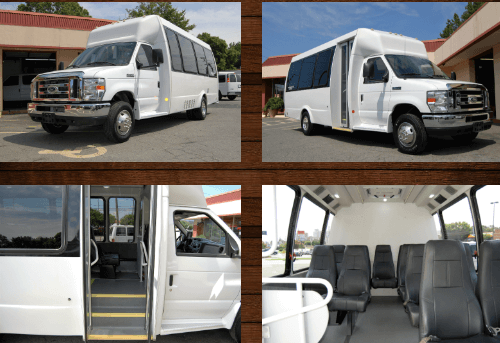
15 seat bus.
Seriously, this is one of my biggest pet peeves, when there are these gigantic buses all over the streets and no one is in them. You don’t need to have a bus with a capacity of 80, or god forbid 150, if you don’t have the ridership. But because of the nonsense idea known as “induced demand,” these city governments feel compelled to waste our money constantly on enormous and empty buses. For the record, this also expends more greenhouse gases. Global Warming Catastrophism is extremely fake and gay, but buses with no passengers on them get a pass from these types for no real logical reason.

I can’t get over this. It’s an empty bus.
In fact, these Urbanite dipshits praise them for being “spacious and roomy”.
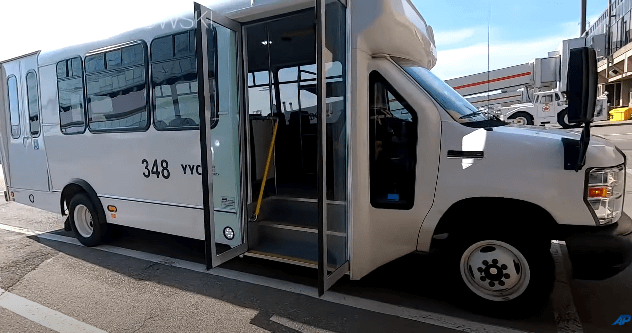
17 seat bus.
One of the exceptions tends to be airport buses, like this 17 seat Calgary Airport shuttle above. I guess in those cases it’s harder for them to pretend that they don’t have a very finite demand for people to get from a certain place in the airport to another place.
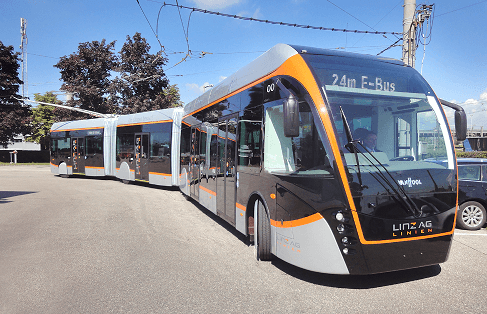
If you need the chonkers then buy them. But these are actually a very strong argument against density. For the congestion to be improved by these wheeled Titanics it has to be horrible in the first place. If it’s not, then these things just ruin your driving experience by being tediously slow. Although because these people just hate cars, they probably think that it’s a good thing that these guys annoy the hell out of drivers.
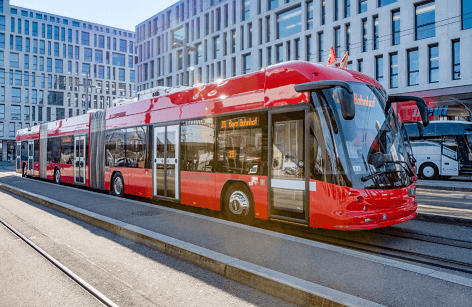
If for some reason you demand a bus system in a low density area, for God’s sake, stick with appropriately sized buses. There are diminishing marginal returns to higher passenger counts per bus, you won’t be able to fill them anyway, and the larger buses are more annoying for other drivers to deal with. Smaller buses can be win-win for everyone.
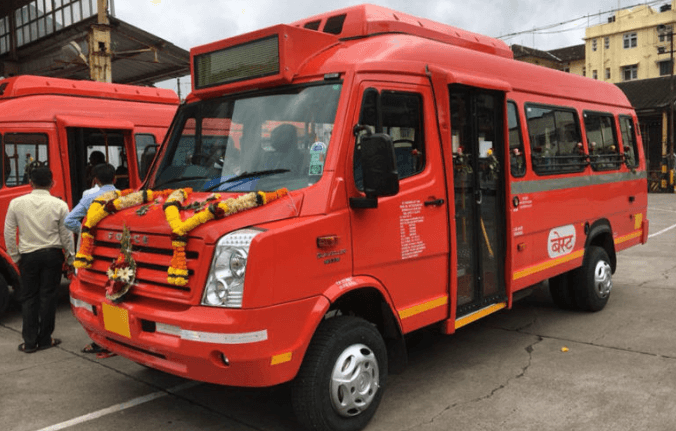
21 seat bus.
And it’s very interesting that he used Florence, Italy as an example. Remember when he said that Florence Italy had five hundred buses? What he forgot to mention is that their population density allowed that, and even with that they have a whole bunch of tiny buses. They don’t pretend that enormous buses means that people will magically start riding the bus.

They do have some regular sized buses.
To be clear, part of that is because they have to, in order to navigate the tight streets. But that also shows you how misleading the total number claims are. These things can hold less than 20 passengers, or about one quarter of a regular bus, like the one that he was on in Tulsa, Oklahoma.

A “Tecno Minibus” electric bus from Florence, Italy.
There are a lot of things that ZOG spends our money on. The people who spend five thousand dollars per month, plus rent, for “refugees,” have plenty of money to give poor, but actually working people the transportation that they may need.
This is one of those rare policies that works in both this ever browning ZOG shithole, or some pristine beautiful homogenous country, although better in the latter. It’s not actually that expensive to give truly minimum wage people subsidized taxi rides to their jobs and back, even in rural areas.
You’re looking at around $30 extra tax per year per person, which is about 5% of what the government already spends on transportation. I’m sure a lot of that money is already going to bus systems that average 10% capacity usage, where the moral justification is that no-income human detritus needs you to pay for them to try sleeping in a different bus station tonight.

Norwegian village.
With the exception of extreme remote locations where there is just no one else around and the trip into town is hundreds of kilometers, you can just subsidize the tiny number of people who are legitimately in need. Then you can run the occasional bus line if there is actual, real demand. You certainly do not need to shove people into high density areas, and force them to share space with the crackheads and Crime-Americans as some sort of morally important quest in order to enable public transit for no income people. There is no reason to assume that enormous buses are the best solution to low-income people’s transportation.
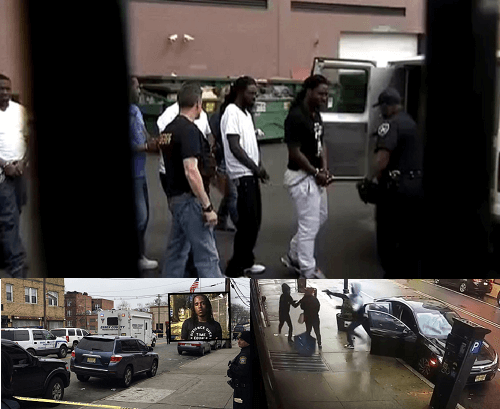
But, as I’ve said before, if these antifas actually cared about walkability and public transit, they wouldn’t support pro-crime of colour and pro-druggies policies. Public transit will always suffer from The Partial Trip Problem and The Spacing Problem. But there’s no reason why it has to also suffer from the Wildlife Problem.

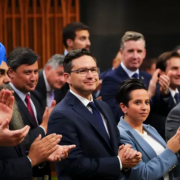


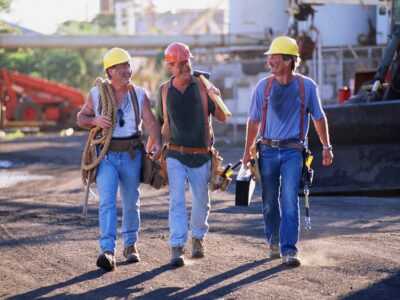





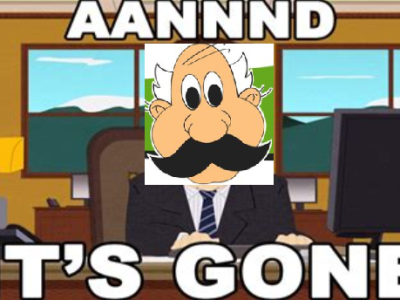
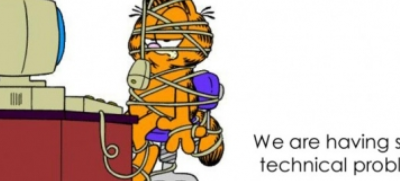

Speaking of wildlife: https://www.cbc.ca/news/canada/toronto/toronto-ttc-transit-violence-1.6726802
The Byline reads: “Increased security comes after string of people attacked, injured on the TTC.” And not just TO: “Cities outside Toronto are also witnessing an increase of violence on their transit networks. The Amalgamated Transit Union Canada, representing 35,000 transit workers, called for a national task force to tackle violence against workers and riders on public transit systems across the country.”
Who does the attacking? Ah, it’s the “homeless.”
And the result? “We are at a breaking point. We’re in a situation where we have members saying they are in fear,” said Marvin Alfred, Local 113 president.
“We have Torontonians saying they are looking at options other than the TTC, which increases costs and emissions, versus taking public transit because they are too scared.”
Once again, regarding the wildlife: “FIRST READING: Here are all of Canada’s unprovoked attacks from just the last 30 days. Almost every day now yields some new account of a random Canadian being stabbed, punched or pushed for no reason whatsoever” https://nationalpost.com/opinion/canada-stranger-attacks
Yep. Good finds.
The transport infrastructure of ski resorts is an interesting point of comparison. Kind of like a version of your people mover example that actually works (for one purpose only)
Going up the mountain under your own power is literally like crawling and the only reasonable way to get up is to wait in the lift line and take the ski lift.
Heck, these transport troons should love ski resorts because they all use fixed point mass transit infrastructure and no one worries about carrying groceries anywhere… 🤣
The biggest problem was speed, because the chairs need to move slowly enough for people get on, but that means they take a long time to reach the top and if you sped it up you’d be flinging people off the lift, especially novice skiers. They solved it with detachable chairs, but now they can’t do mid-lift pick ups or drop offs. Really they’re like trains that have one stop and only go in one direction, so the ultimate in efficiency!
Of course they also have “just one more lane bro” but it’s “just one more seat bro”. The old chairs were dual seaters and the newer ones I’ve seen go up to six seats. But they still have “just one more chair bro” because to get to a different part of the mountain you have to spend millions to install a dedicated chair lift.
All in all it’s a recreational activity and entirely unlike the real world where people have different destinations and origins and all of those fun things.
Right, if you have just a few legitimate destinations it does make a ton of sense to have fixed path infrastructure. In fact it’d be crazy not to have it.
But imagine if they refused to add extra seats because of “induced demand,” as if it’s a bad thing that more people get to ride the lift.